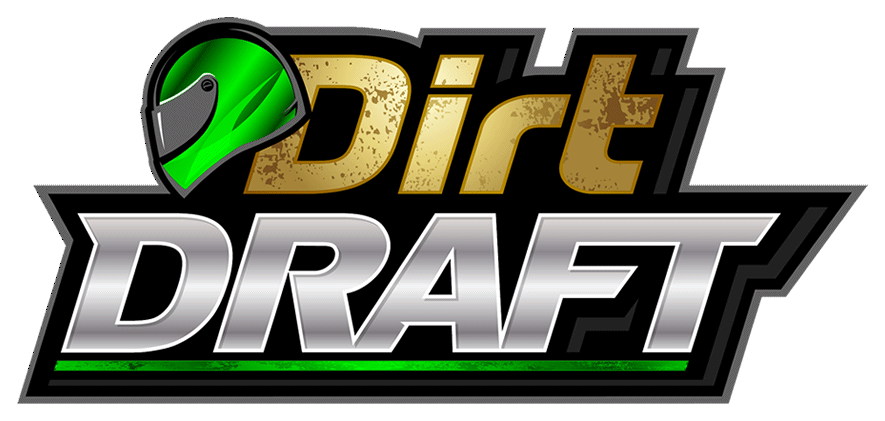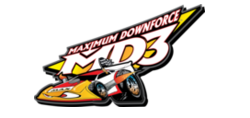
DirtonDirt.com exclusive
Frye recalls glory days with Garrison and GRT
By Kevin Kovac
DirtonDirt.com senior writerThe first time Bill Frye crossed paths with GRT Race Cars co-founder Joe Garrison was in 1987. He was a 26-year-old Dirt Late Model newcomer fresh out of street stocks, living in Squires, Mo., and accompanied a Lebanon, Mo., speed shop owner and driver named Don McClellan to the fledgling chassis manufacturer’s headquarters in Greenbrier, Ark.
“I got to know (McClellan) buying a few parts and stuff and I just rode down there with him,” Frye recalled. “We picked up GRT (car) No. 4 (for McClellan to drive) and I met Joe.”
Little did Frye know that soon afterward he would become linked for life with Garrison. The two men formed a brotherly bond that would see them launch Hall of Fame careers in the sport while traveling and winning major events together across the country, but also experience periods of disagreement and estrangement that time would inevitably heal.
After Garrison died Wednesday evening at the age of 60 following a battle with cancer, Frye, 58, couldn’t help waxing nostalgic about his long-running, for-better-or-for-worse connection with the Team GRT leader known as Joe Boy.
“Me and Joe kind of had a love-hate relationship for years,” Frye said Thursday afternoon from his Frye Motorsports shop in Greenbrier, Ark., where he makes his living as a Rocket Chassis dealer, selling parts, repairing cars and offering technical consultation among other services. “But I thought about it this morning — I would’ve never had the courage to go racing professionally if it wasn’t for him, so I guess I owe my career to him. Me and him had a lot of ups and downs, but I credit him for getting me where I am.”
Frye came into Garrison’s circle in the early days of GRT — shortly after Garrison opened the business in partnership with his brother Mike — and thus bore first-hand witness to Garrison’s rise to the top of the Dirt Late Model division. As Frye said, GRT’s growth from operating out of a tiny garage to its status as a Dirt Late Model juggernaut during its halcyon days of the mid-‘90s through the mid-2000s was evidence that Garrison “lived the American dream.”
It was in 1989 when Frye obtained his first GRT car. He had driven Shaw Race Cars during his first two seasons of Dirt Late Model action but decided to try a used GRT mount after receiving a warm welcome during a visit to Garrison’s shop.
“They treated us like we was friends, like they known us all their lives,” Frye said of his reception by Garrison and Co. “And we went home with a race car.”
Frye ran that machine throughout the ’89 season before purchasing his first brand-new GRT machine for the ’90 campaign. An increasing amount of regional success over the 1990-91 seasons brought him even closer to Garrison and, for all intents and purposes, changed the trajectory of his career and life.
“We won like three track championships (that year) in Missouri and Arkansas,” Frye said. “Then we went back the next year and got a new car and kept the old car for a backup in ’91 and won the MLRA championship, the big Octoberfest race in Muskogee (Okla.) and a bunch of other stuff.
“That’s when Garrison come up to me,” he continued, recalling how Garrison asked Frye to relocate to Greenbrier to do a GRT house-car deal that included race cars, a shop to work in, a pit crew and a promise of side work at the business if he needed “a job during the week to buy groceries.”
Moving three hours from his home in his native Missouri to Greenbrier to go racing full time wasn’t an easy decision for Frye. While Frye and his first wife, Carol, who passed away in 2012 at 46 from cancer after 19 years of marriage, did not yet have children, he owned a successful welding and fabrication business. Would it pay off for Frye to make racing his occupation and chase more far-flung glory? He wasn’t so sure, but Garrison talked him into taking the gamble.
“He said, ‘Man, you can make a living doing this. I’m telling you, you can win these races,’ ” Frye said of Garrison. “I said, ‘Joe, no, no.’ He gave me the confidence to go and do it.”
Frye has never seen himself as a superstar talent behind the wheel — as he says he’s always modestly told people, “I don’t feel like I was a good race car driver, I just had some good hot rods” — but he conceded that Garrison obviously thought he possessed qualities that could make him a winner. He believes it was his work ethic and desire to build a better mousetrap that most caught Garrison’s eye.
“In ’91, I ordered a spring from him,” Frye recalled. “He said, ‘What are you gonna do with that?’ I said, ‘I’m gonna put it in the right-front. The car’s doing something, so I want a 650 spring.’ He said, ‘There ain’t no way you can run a 650 spring in the right-front of a Late Model.’
“Well, we went to winning races, and I think what he saw in me was that I wasn’t afraid to try something and I didn’t go around and do what everyone else was doing. I always told ‘em what the car needed instead of what I thought it needed.”
Frye, of course, made the move to Greenbrier, selling his business and renting a duplex to live in. He immediately went to work turning his familiar No. 66 machine into the de facto GRT house car and spearheading with his crew the customization of a new building Garrison built on his property into a “pro race shop” in which his team toiled “full time and took pride in what we did.”
The 1992 season began Frye’s extremely successful six-year run racing virtually side-by-side with Garrison. The marriage kicked off that February with Frye’s first-ever trip south to compete in Florida’s Speedweeks activities and picked up steam from there.
“We built a light car, car No. 89 (out of the GRT shop), and took it to Florida,” Frye said. “It weighed like 1,550 pounds ready to race. Man, it was light. It was years ahead of itself actually. We come back and we built another car, car No. 100, and we won 26 or 27 features that year and not a one of them was a weekly show, they were all specials. It was probably the best car I ever had, that one.”
Frye became a serious contender all over the country, traveling extensively to Hav-A-Tampa Dirt Racing Series and other major events. During that period going up-and-down the road with Garrison he won 10 Hav-A-Tampa races (most notably the 1995 Shootout at Dixie Speedway in Woodstock, Ga.), eight DIRTcar Summer Nationals features, the 1996 Topless 100 at Batesville (Ark.) Motor Speedway and the 1994 Hillbilly 100 at Pennsboro (W.Va.) Speedway and flirted with victory in several other crown-jewel shows, including the Dream (second in ’96) and World 100 (third in ’96) at Eldora Speedway in Rossburg, Ohio, and the USA Nationals at Cedar Lake Speedway in New Richmond, Wis. (third in ’96 and ’97).
“That was a really good time in my life,” Frye recalled. “You know how it is when you’re winning — Joe was selling cars right and left and we was winning money, so everything was great. I told somebody, ‘I lived in a duplex that cost $250 a month to rent and I had a shoebox in the closest with $130,000 in it.’
“We went to races and we won. Everywhere we went, it was like, ‘Yeah, we’re probably gonna go win that.’ We had that much confidence in ourselves. From ’92 to ’97, we had great times. We went to races and enjoyed ourselves. We ate good, raced hard, drove all night and came home. We done some phenomenal stuff in the early- and mid-‘90s.”
The Dixie Shootout triumph was the highlight of Frye’s red-hot stretch with Garrison. He recalls nearly heading home early from that weekend’s program after qualifying poorly on Friday night.
“My wife was pregnant at home at the time and I called her (after Friday’s action) and told her, ‘I’m coming home tomorrow. There ain’t no need for me being here. You can’t pass and I’m deep in the B,’ ” Frye said. “She said, ‘You already bought pit passes, you’ve already got your motel paid for. You might as well stay.’ I said, ‘Well, OK,’ so we stayed.
“I went out and hot-lapped the car the next day and it was rough, hooked up. He’d plowed it. So we done what we’d always done —we didn’t do what we saw everybody else doing and we didn’t talk to anybody else about what they were doing. We did to the car what we felt like it needed. I freed the car, went out in the consy, started 10th or 12th and run second to Johnny Johnson. I come in and said, ‘If we free this thing up a little more we can win this thing.’ We freed it up a little more and passed ‘em all (for a triumph worth $35,000).”
Frye’s success on the track combined with his technical abilities to help propel GRT to all-time heights during that heady period. GRT was soon cranking out in the neighborhood of 300 cars a year, its popularity in no small measure related to ideas that Frye brought to the table.
“I’d catch (Garrison and staff) when they weren’t in the jig and I’d go in there and build a chassis, jerk it out and we’d go put it together,” Frye said. “His guys didn’t like me because I changed a lot of stuff. They wanted cookie-cutter cars that you could just sell, sell, sell, and I’d go in there … it’s kind of funny. I’d tell Joe what I wanted to change, what I wanted to build, and he’d look at me and say, ‘That’ll never work. Frye, you’re crazy.’ And I’d say, ‘Well, I gotta try it,’ and I’d try it, and a lot of times, before we’d ever get it to the racetrack, he’d change the jig and start doing something different, doing ‘em all like that.
“Man, we made a lot of changes, really, really developed them cars in the early ‘90s.”
Friction that developed between Frye and Garrison led to their first breakup late in the 1997 season. Frye went on to spend the next couple seasons piloting a variety of different chassis and performed well, but by 2000 he was back in GRT cars, albeit this time not running as widespread a schedule nor traveling regularly with Garrison.
“My wife asked me, ‘What kind of car you gonna get? You’ve had MasterSbilt, Warriors, Rayburns. What kind of car?’ ” Frye said, recalling when he was contemplating his plans for 2000. “I was talking to (Mark) Richards about some Rockets, and I said to her, ‘Well, here’s the deal. When I left GRT, GRT was the best possible race car I felt like I could build. Me and Joe had poured everything we could pour into that car. That was what we thought was the best possible car made, and I thought it was better than anybody else’s.’ But I just kept thinking, They’ve got some tweaks somewhere that’s a tick better than we are in the slick, so I felt like I needed to try something else … (but) there wasn’t no magic in them (other cars), that’s for sure.
“I think Joe’s quality of manufacturing was so much better at that time than anyone else’s,” he continued. “We built a car in four days to take to the PRI show in I think ’94, and it was so much nicer than anybody else had at the time it was like it was a show car compared to the other guys. The other guys just had old chopped-up race cars. It was like six of us built this thing, but it was just beautiful compared to what everybody else was doing at the time — the brake lines were braided, everything was polished, everything was fit, the lines were perfect, everything was hemmed and easy-edged.”
Frye decided a reunion with Garrison was his best option.
“We didn’t hardly talk for three or four years from ’97 to 2000,” Frye said. “Then I called him and I said, ‘Joe, I gotta meet with you. I gotta apologize. I’ve tried these other cars, I struggled in them. I ain’t been where I’m at. I can either go get Rockets or I can get GRTs. You’re about 50-50 right now one or the other.’
“Then I said, ‘I’ve already talked to Mark Richards, but the difference is, I’m gonna lose a week of my life a year going to West Virginia if I get a Rocket. You’re 7 miles down the road from my shop.’ He told me what he’d do, and I told him, ‘We’re gonna race your cars.’ ”
Frye sat in GRT vehicles through 2008, shining in regional competition with five Schaeffer’s MARS Racing Series titles in a seven-year span. He also registered notable runner-up finishes in the 2005 Topless 100 and 2006 Show-Me 100 at West Plains (Mo.) Motor Speedway. But in ’09 he made a switch to Rocket Chassis — beginning his decade-old association as a dealer with the Shinnston, W.Va., company — that carried him through 2011, his last season running his own Dirt Late Model equipment.
While Frye continued business dealings with GRT after he left the firm’s Dirt Late Model fold, a falling out between him and Garrison eventually broke off their relations again.
“Me and Joe, I still bought modifieds and sold them (after 2008),” said Frye, noting that modified construction became GRT’s bread-and-butter as its share of the Dirt Late Model market dwindled precipitously during the 2010s. “I still sold some GRT Late Models, too, but they faded out, and the modifieds, me and him got into it over the pricing of one and we ended up cussing each other out. He told me I just probably didn’t need to buy anything else from him and I told him I didn’t figure I ever needed to set foot in the place again.
“So I didn’t even set foot in the place for five years. I’d see him in a restaurant (around Greenbrier and we didn’t even speak.”
But earlier this year, after reports of Garrison’s declining health reached Frye, he realized that his history with Garrison, all those years of friendship and good times they shared in and outside of racing, superseded the disagreements. He decided the time had come to reach out to his old pal and end their estrangement.
“About three months ago I’d heard that he’d had pneumonia and been in the hospital, and got out, and I got to talking about it and thinking about it,” Frye said. “I thought, You know, there ain’t no need that two men who have been through all me and him have been through together, that we shouldn’t talk and be friends.
“So I just drove in there (to see Garrison) one morning and caught him by surprise. I just told him, ‘You thought I’ve done you wrong, I’ve thought you done me wrong — several times. I’m just here to tell you I forgive you for anything I feel like you ever did wrong.’ And I said, ‘I just hope you can forgive me for everything you think I did wrong to you.’
“I caught him off guard and he sat there a minute, and then he stuck his hand out, we shook hands and he said, ‘I guess we’re gonna start fresh.’ We’ve been speaking and trading business ever since, the last couple months.”
A weight was lifted off Frye’s shoulders. Though saddened by Garrison’s passing, he could find solace in the fact a friendship that began three decades ago and crossed numerous hills and valleys since then had been renewed.
“I thought, I don’t want anybody to die with me not letting them know that I care for them,” said Frye, who related a heartwarming personal story on his Facebook page after Garrison’s passing in which he noted that since 1996 he’s carried a $100 bill in his wallet given to him by Garrison. “Life’s too short. The last few months, we went on like we should’ve been doing all our lives. I’m gonna miss him. He was a huge part of my life.”

















































